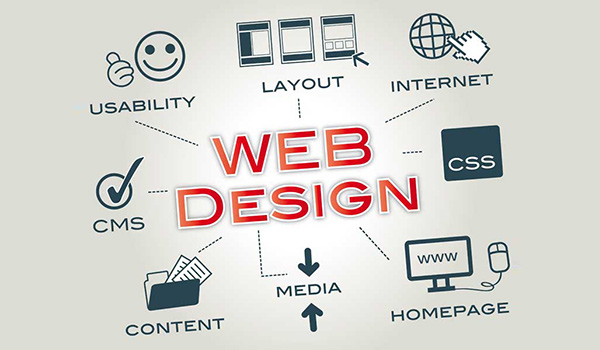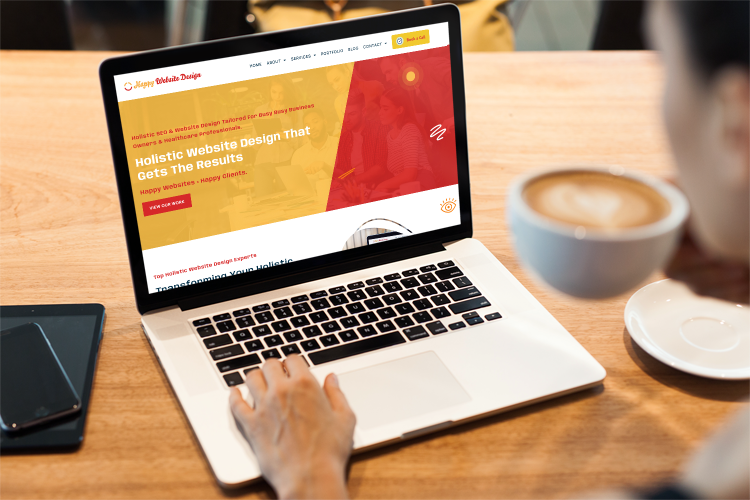Why Holistic Web Style Is the Trick to a Seamless Individual Experience
In today's digital landscape, the value of holistic web design can not be overemphasized, as it delicately weaves with each other aesthetic appeals, functionality, and functionality to develop a seamless individual experience. By adopting a comprehensive technique that prioritizes individual demands and leverages feedback, developers can boost the overall communication with their systems.
Comprehending All Natural Website Design

Integrating individual comments and behavior information is vital in all natural website design. This repetitive process helps designers to identify pain factors and locations for renovation, making certain that the last product resonates with users. Moreover, all natural design stresses the relevance of availability, making sure that all users, no matter their capacities, can browse and communicate with the site efficiently.
Furthermore, the assimilation of responsive style concepts is vital in accommodating different devices and screen dimensions, further improving the user experience. By recognizing the interconnectedness of these components, designers can develop sites that not just draw in yet also maintain users, inevitably driving engagement and conversions. Alternative internet style is, therefore, a critical method that fosters a meaningful partnership between users and electronic areas, leading the way for lasting online success.
Secret Elements of Holistic Style

One more vital element is uniformity in aesthetic and practical elements across the internet site. This entails maintaining a cohesive shade palette, typography, and layout, which helps customers navigate the website without effort - happy web design. Additionally, responsive layout is crucial, ensuring that the web site performs ideally throughout different devices and screen dimensions
Availability is also an important component of holistic design. By sticking to accessibility standards, developers can create inclusive experiences that provide to varied user groups, consisting of those with impairments. In addition, the assimilation of content strategy ensures that valuable information is offered clearly and succinctly, improving understanding and engagement.
Finally, reliable cooperation amongst design, growth, and advertising and marketing groups fosters a unified vision that aligns with company objectives. By focusing on these crucial aspects, alternative website design can provide an improving customer experience that is both interesting and useful.
Advantages of a Smooth Experience
Producing a seamless individual experience uses countless advantages that considerably enhance general satisfaction and engagement. At its core, a seamless experience fosters a sense of ease and intuitiveness, enabling individuals to navigate a site or application easily. This decrease in friction not only enhances the chance of customers returning but likewise improves their desire to advise the system to others.
Moreover, a smooth experience brings about boosted conversion prices. When individuals find what they need with marginal effort, they are a lot more likely to complete wanted activities, such as making an acquisition or enrolling in a newsletter. This effectiveness translates right into greater client retention, as pleased users are most likely to come to be devoted supporters for the brand.
Additionally, a natural and seamless interface minimizes cognitive lots, enabling customers to focus on content instead than battling with navigation or design inconsistencies. This quality not only improves user satisfaction yet likewise enhances brand integrity. Ultimately, focusing on a seamless individual experience leads to an affordable advantage, as organizations that buy this aspect are much better placed to meet the advancing expectations of their target market and drive lasting success.
Implementing Holistic Strategies
To attain a really seamless individual experience, companies must embrace all natural strategies that think about every aspect of style and capability. This approach begins with a merged vision that straightens employee across various self-controls, consisting of UX/UI layout, web content growth, and technological implementation. Effective partnership fosters a shared understanding of customer needs and objectives, enabling even more systematic design options.
Next, it is essential to produce individual identities and trip maps that reflect the diverse demographics and habits of the target market. By empathizing with users' viewpoints, companies can anticipate obstacles and improve interactions throughout the digital experience.

In addition, consistent branding and messaging ought to permeate every touchpoint, guaranteeing a recognizable and credible visibility that boosts user interaction. Integrating receptive layout principles is likewise web developers for small businesses vital, as users currently connect with content across several gadgets.
Moreover, companies must focus on accessibility, ensuring that all customers, regardless of ability, can browse and gain from their electronic offerings. By embedding these holistic approaches right into the style process, companies can create a cohesive and enjoyable customer experience that promotes fulfillment and loyalty.
Measuring Individual Experience Success
While attaining an all natural strategy to web layout is vital, determining individual experience success is just as crucial to ensure that style strategies successfully meet individual needs. This needs a mix of qualitative and quantitative metrics to get a comprehensive understanding of individual communications and fulfillment degrees.
Key efficiency indications (KPIs) such as user interaction, conversion prices, and bounce rates supply important measurable insights. A high conversion price may suggest that users discover the layout intuitive and compelling. Alternatively, raised bounce prices can signal that individuals are disappointed or baffled, requiring a reevaluation of the layout components.
Qualitative measures, including individual responses, surveys, and usability testing, are critical for acquiring deeper understandings right into the customer experience. Analyzing individual remarks can disclose discomfort factors and locations for improvement, while usability tests allow designers to observe real-time interactions and determine challenges customers encounter.
Inevitably, the integration of these measurement methods enables for constant refinement of web style, guaranteeing it stays user-centered and efficient in providing a seamless experience (happy web design). Consistently taking another look at these metrics will certainly enable designers to adapt to evolving user demands and choices, solidifying the overall success of a holistic internet layout method
Final Thought
To conclude, holistic website design becomes a basic technique to accomplishing a seamless customer experience. By incorporating appearances, capability, and functionality, this design philosophy addresses varied individual needs and choices. The concentrate on user-centered techniques not just boosts navigation and fulfillment yet likewise fosters brand integrity and access. Inevitably, the implementation of holistic style concepts dramatically adds to improved conversion rates and customer retention, developing a robust structure for reliable digital interactions.